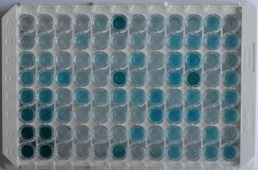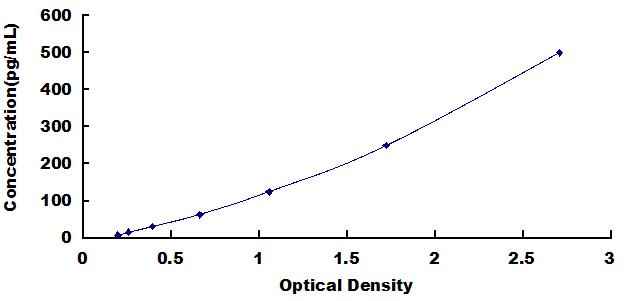Packages (Simulation)

Reagent Preparation

Image (I)
Image (II)
Certificate


ELISA Kit for S100 Calcium Binding Protein (S100)
S100-A1; S100A1; S100-Alpha; S-100 Protein; S-100 protein subunit alpha; S-100 protein alpha chain
- Product No.SEA012Mu
- Organism SpeciesMus musculus (Mouse) Same name, Different species.
- Sample Typeserum, plasma, tissue homogenates, cell lysates, cell culture supernates and other biological fluids
- Test MethodDouble-antibody Sandwich
- Assay Length3h
- Detection Range7.8-500pg/mL
- SensitivityThe minimum detectable dose of this kit is typically less than 3.1pg/mL.
- DownloadInstruction Manual
- UOM 48T96T 96T*5 96T*10 96T*100
- FOB
US$ 454
US$ 648
US$ 2916
US$ 5508
US$ 45360
For more details, please contact local distributors!
Specificity
This assay has high sensitivity and excellent specificity for detection of S100 Calcium Binding Protein (S100).
No significant cross-reactivity or interference between S100 Calcium Binding Protein (S100) and analogues was observed.
Recovery
Matrices listed below were spiked with certain level of recombinant S100 Calcium Binding Protein (S100) and the recovery rates were calculated by comparing the measured value to the expected amount of S100 Calcium Binding Protein (S100) in samples.
| Matrix | Recovery range (%) | Average(%) |
| serum(n=5) | 88-98 | 93 |
| EDTA plasma(n=5) | 91-98 | 94 |
| heparin plasma(n=5) | 92-101 | 96 |
Precision
Intra-assay Precision (Precision within an assay): 3 samples with low, middle and high level S100 Calcium Binding Protein (S100) were tested 20 times on one plate, respectively.
Inter-assay Precision (Precision between assays): 3 samples with low, middle and high level S100 Calcium Binding Protein (S100) were tested on 3 different plates, 8 replicates in each plate.
CV(%) = SD/meanX100
Intra-Assay: CV<10%
Inter-Assay: CV<12%
Linearity
The linearity of the kit was assayed by testing samples spiked with appropriate concentration of S100 Calcium Binding Protein (S100) and their serial dilutions. The results were demonstrated by the percentage of calculated concentration to the expected.
| Sample | 1:2 | 1:4 | 1:8 | 1:16 |
| serum(n=5) | 90-101% | 94-104% | 84-102% | 84-101% |
| EDTA plasma(n=5) | 89-97% | 92-101% | 86-102% | 88-96% |
| heparin plasma(n=5) | 78-91% | 89-101% | 86-96% | 82-92% |
Stability
The stability of kit is determined by the loss rate of activity. The loss rate of this kit is less than 5% within the expiration date under appropriate storage condition.
To minimize extra influence on the performance, operation procedures and lab conditions, especially room temperature, air humidity, incubator temperature should be strictly controlled. It is also strongly suggested that the whole assay is performed by the same operator from the beginning to the end.
Reagents and materials provided
| Reagents | Quantity | Reagents | Quantity |
| Pre-coated, ready to use 96-well strip plate | 1 | Plate sealer for 96 wells | 4 |
| Standard | 2 | Standard Diluent | 1×20mL |
| Detection Reagent A | 1×120µL | Assay Diluent A | 1×12mL |
| Detection Reagent B | 1×120µL | Assay Diluent B | 1×12mL |
| TMB Substrate | 1×9mL | Stop Solution | 1×6mL |
| Wash Buffer (30 × concentrate) | 1×20mL | Instruction manual | 1 |
Assay procedure summary
1. Prepare all reagents, samples and standards;
2. Add 100µL standard or sample to each well. Incubate 1 hours at 37°C;
3. Aspirate and add 100µL prepared Detection Reagent A. Incubate 1 hour at 37°C;
4. Aspirate and wash 3 times;
5. Add 100µL prepared Detection Reagent B. Incubate 30 minutes at 37°C;
6. Aspirate and wash 5 times;
7. Add 90µL Substrate Solution. Incubate 10-20 minutes at 37°C;
8. Add 50µL Stop Solution. Read at 450nm immediately.
GIVEAWAYS
INCREMENT SERVICES
-
 Single-component Reagents of Assay Kit
Single-component Reagents of Assay Kit
-
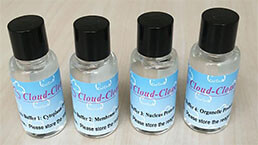 Lysis Buffer Specific for ELISA / CLIA
Lysis Buffer Specific for ELISA / CLIA
-
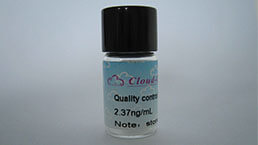 Quality Control of Kit
Quality Control of Kit
-
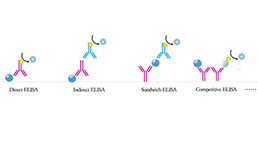 ELISA Kit Customized Service
ELISA Kit Customized Service
-
 Disease Model Customized Service
Disease Model Customized Service
-
 Serums Customized Service
Serums Customized Service
-
 TGFB1 Activation Reagent
TGFB1 Activation Reagent
-
 Real Time PCR Experimental Service
Real Time PCR Experimental Service
-
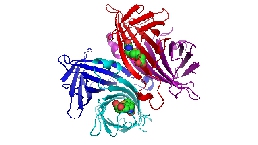 Streptavidin
Streptavidin
-
 Fast blue Protein Stain solution
Fast blue Protein Stain solution
-
 Single-component Reagents of FLIA Kit
Single-component Reagents of FLIA Kit
-
 Streptavidin-Agarose Beads
Streptavidin-Agarose Beads
| Magazine | Citations |
| Brain Research | Vasoactive intestinal peptide protects against ischemic brain damage induced by focal cerebral ischemia in rats ScienceDirect: S0006899311008663 |
| J Exp Neurosci | A New Technique for Collection of Cerebrospinal Fluid in Rat Pups PubMed: 26056488 |
| PLoS One | Regulation of Nutritional Metabolism in Transition Dairy Cows: Energy Homeostasis and Health in Response to Post-Ruminal Choline and Methionine pubmed:27501393 |
| brain research | Ellagic acid exerts protective effect in intrastriatal 6-hydroxydopamine rat model of Parkinson's disease: Possible involvement of ERβ/Nrf2/HO-1 signaling. pubmed:28238669 |
| КиберЛенинка | Levels of neurotropic autoantibodies in patients with schizophrenia article:n |
| Biomed Research International | Epigallocatechin-3-Gallate Reduces Neuronal Apoptosis in Rats after Middle Cerebral Artery Occlusion Injury via PI3K/AKT/eNOS Signaling Pathway Pubmed:29770336 |
| Metabolic Brain Disease | Trigonelline protects hippocampus against intracerebral Aβ (1–40) as a model of Alzheimer's disease in the rat: insights into underlying mechanisms Pubmed: 30421246 |
| ВОЗМОЖНОСТЬ ПРОГНОЗИРОВАНИЯ ОСТРОЙ НЕСПЕЦИФИЧЕСКОЙ БОЛИ В НИЖНЕЙ ЧАСТИ СПИНЫ С ИСПОЛЬЗОВАНИЕМ СЫВОРОТОЧНЫХ … | |
| ВЛИЯНИЕ ХРОНИЧЕСКОГО ВВЕДЕНИЯ НЕЙРОЛЕПТИКОВ НА УРОВНИ НЕЙРОСПЕЦИФИЧЕСКИХ АУТОАНТИТЕЛ В КРОВИ У КРЫС |
| Catalog No. | Related products for research use of Mus musculus (Mouse) Organism species | Applications (RESEARCH USE ONLY!) |
| RPA012Mu02 | Recombinant S100 Calcium Binding Protein (S100) | Positive Control; Immunogen; SDS-PAGE; WB. |
| RPA012Mu01 | Recombinant S100 Calcium Binding Protein (S100) | Positive Control; Immunogen; SDS-PAGE; WB. |
| PAA012Mu02 | Polyclonal Antibody to S100 Calcium Binding Protein (S100) | WB; IHC; ICC; IP. |
| PAA012Mu01 | Polyclonal Antibody to S100 Calcium Binding Protein (S100) | WB; IHC; ICC/IF |
| LAA012Mu71 | Biotin-Linked Polyclonal Antibody to S100 Calcium Binding Protein (S100) | IHC |
| SEA012Mu | ELISA Kit for S100 Calcium Binding Protein (S100) | Enzyme-linked immunosorbent assay for Antigen Detection. |
| LMA012Mu | Multiplex Assay Kit for S100 Calcium Binding Protein (S100) ,etc. by FLIA (Flow Luminescence Immunoassay) | FLIA Kit for Antigen Detection. |

